The year 1864 in architecture involved some significant architectural events and new buildings.
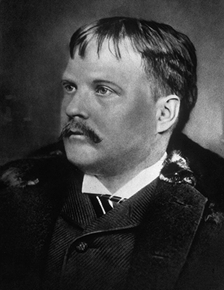
John Wellborn Root was an American architect who was based in Chicago with Daniel Burnham. He was one of the founders of the Chicago School style. Two of his buildings have been designated a National Historic Landmark; others have been designated Chicago landmarks and listed on the National Register of Historic Places. In 1958, he was posthumously awarded the AIA Gold Medal.
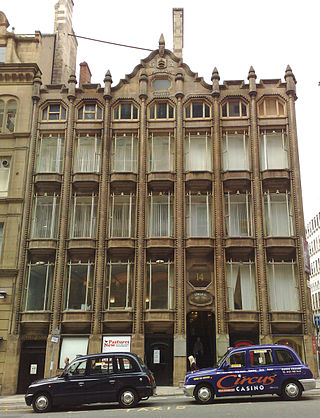
Peter Ellis (1805–1884) was a British architect and inventor of the paternoster lift from Liverpool.
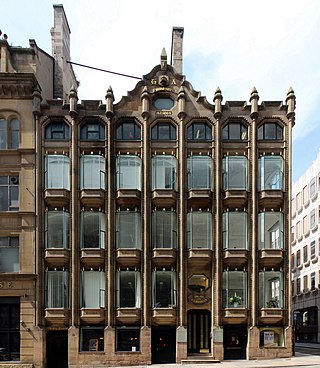
Oriel Chambers is an office building located on Water Street near the town hall in Liverpool, England. It was the world's first building featuring a metal-framed glass curtain wall, which has since become a defining feature of skyscrapers around the world. Designed by architect Peter Ellis and built in 1864, it has been grade I listed due to its outstanding importance.

Built in 1716–17 as a charity school, Bluecoat Chambers in School Lane is the oldest surviving building in central Liverpool, England. Following the Liverpool Blue Coat School's move to another site in 1906, the building was rented from 1907 onwards by the Sandon Studios Society. Based on the presence of this art society and the subsequent formation of the Bluecoat Society of Arts in 1927, the successor organisation laid claim to being the oldest arts centre in Great Britain, now called the Bluecoat.
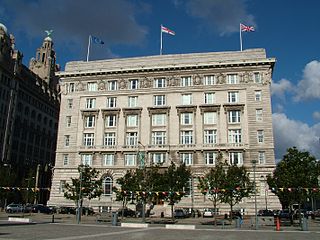
The Cunard Building is a Grade II* listed building in Liverpool, England. It is located at the Pier Head and along with the neighbouring Royal Liver Building and Port of Liverpool Building is one of Liverpool's Three Graces, which line the city's waterfront. It is also part of Liverpool's former UNESCO designated World Heritage, the Maritime Mercantile City.

An oriel window is a form of bay window which protrudes from the main wall of a building but does not reach to the ground. Supported by corbels, brackets, or similar cantilevers, an oriel window is most commonly found projecting from an upper floor but is also sometimes used on the ground floor.

A bay window is a window space projecting outward from the main walls of a building and forming a bay in a room.

The Bank of England Building is a Grade I listed building located in Liverpool, England.
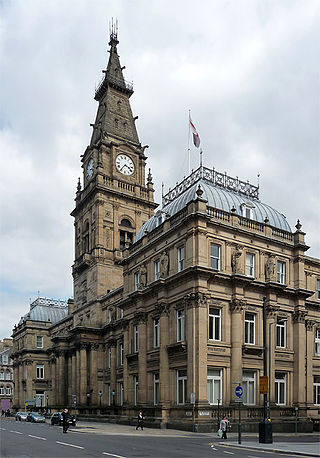
Municipal Buildings is a former council office building that has been converted into a hotel. It is located on Dale Street in the centre of Liverpool, England. It is a Grade II* listed building.
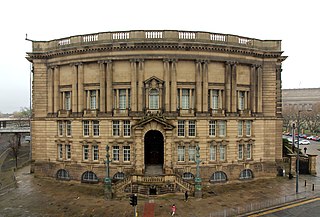
The College of Technology and Museum Extension in Byrom Street, Liverpool, England, was built between 1896 and 1901, the architect was Edward William Mountford. The building was constructed to provide a new College of Technology and an extension to the museum. The college occupied the lower levels and the museum the upper levels. Bomb damage led to some reconstruction work in the 1960s. The building is Grade II* listed.

The Reliance Building is a skyscraper located at 1 W. Washington Street in the Loop community area of Chicago, Illinois. The first floor and basement were designed by John Root of the Burnham and Root architectural firm in 1890, with the rest of the building completed by Charles B. Atwood in 1895. It is the first skyscraper to have large plate glass windows make up the majority of its surface area, foreshadowing a design feature that would become dominant in the 20th century.
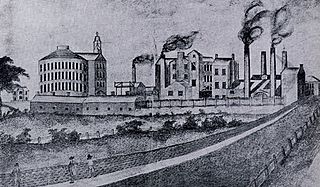
The Round Foundry is a former engineering works off Water Lane in Holbeck, Leeds, West Yorkshire, England. Founded in the late 18th century, the building was developed into the Round Foundry Media Centre in 2005.
Grundy's Northern Pride is an ITV1 Tyne Tees/Granada series about architecture, presented by John Grundy. A follow-up to Grundy's Wonders, the series covers a wider area than that series.

The architecture of Liverpool is rooted in the city's development into a major port of the British Empire. It encompasses a variety of architectural styles of the past 300 years, while next to nothing remains of its medieval structures which would have dated back as far as the 13th century. Erected 1716–18, Bluecoat Chambers is supposed to be the oldest surviving building in central Liverpool.

The Avril Robarts Library (formerly the Avril Robarts Learning Resource Centre (LRC)) is one of the two designated libraries belonging to Liverpool John Moores University (LJMU) in Liverpool, England. It stands at 79 Tithebarn Street and serves the City Campus located mostly on Byrom Street.

46–48 Brown Street is a grade-II building in Manchester, England. Situated in the Spring Gardens area of Manchester city centre near King Street, it was home to Brook's Bank. The building is also known as Lombard Chambers.

Mostyn is a public art gallery in Llandudno, North Wales. It was previously called Oriel Mostyn but was rebranded as simply Mostyn following its 2010 revamp.
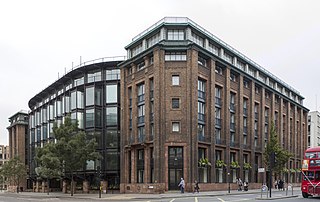
Bracken House is a building at 1 Friday Street and 10 Cannon Street in the City of London, occupied by the Financial Times newspaper until the 1980s, and again beginning May 2019. A late example of modern classicism, it was constructed from 1955 to 1958 to a design by Sir Albert Richardson to serve as the headquarters and printing works of the Financial Times, on a cleared bomb site southeast of St Paul's Cathedral.

Cornelius Sherlock was a British architect who was active in Liverpool in North West England in the late 19th century.


















